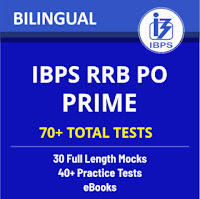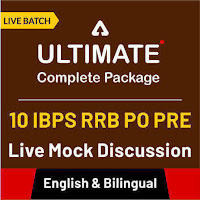
SBI CLERK Quantitative Aptitude Quiz
Directions (1-5): What should come in place of question mark (?) in the following questions. Find the exact value.
Q1. 74 + 12 × 0.75 – 6 = ?
Q2. [(84)² ÷ 28 × 12] ÷ 24 = 7 × ?
Q3. 185% of 400 + 35% of 240 =?% of 1648
Directions (6-8): The following questions are accompanied by three statements (A) or (I), (B) or (II), and (C) or (III). You have to determine which statements(s) is/are sufficient/necessary to answer the questions.
Q6. What is the value of a two–digit number in which digit at tens place is greater than digit at unit place?
A. The sum of the digits is 5.
B. The difference of the squares of the digits is 15.
C. The difference of their digits is 3.
Q7. What is the rate of interest at which Binod has invested money?
A. The compound interest at this rate of Rs 2500in 2 yrs is equal to the simple interest in 3 yrs of Rs1716 ⅔at the same rate.
B. The total simple interest on an investment of Rs 12000 for 3 yrs and Rs 10000 for 5 yrs at this rate is Rs 5160.
C. In 3 yrsRs 1500 at the same rate becomes Rs 1725 by simple interest.
Q8. A person travels from X to Y and back again. How long will it take in travelling both the ways by bus?
A. It takes 21 hours in travelling from X to Y by train and returning by bus.
B. The distance between X and Y is 648 km.
C. A person can save 3 hours if he travels both the ways by train as compared to travelling by bus on the one side and returning by train.
The person will take (21 - 3) 18 hrs, if he travels both the ways by train. So, it takes(18/2 = 9)hrs if he travels one way by train. Hence, he will take (9 + 3) 12 hrs if he travels one way by bus.
So, Required time = 12 × 2 = 24 hrs.
Directions (9-11): Compare the value of 2 quantities given in the question and give answer.(Compare only numerical values)
Q9. Quantity 1: Number of balls made after casting. A solid metallic cylinder having 6cm radius and 24cm height is melted and recast into small spherical balls having 6cm diameter.
Quantity 2: No. of days taken by A to complete the same work alone. A and B can complete a work in 12 days together, B and C can complete the same work in 15 days together and A and C can complete that work in 20 days together.
Q10. Quantity 2: Cost price to the manufacturer. A manufacturer sells a pair of glasses to a wholesale dealer at a profit of 17%. The wholesaler sells the same to a retailer at a profit of 25%. The retailer in turn sells them to a customer for Rs. 32.76, thereby earning a profit of 40%.
Quantity 1: Area of the hall if the Material cost of flooring per m² is Rs. 250 while labor cost of flooring the hall is Rs. 3500 and the total cost of flooring the hall is Rs. 14500.
Q11. Quantity 2: Rate of interest per annum, If the amount is 2.25 times of the sum after 2 years at compound interest (compound annually).
Quantity 1: The speed of the train. A train passes a 50 meters long Platform in 14 seconds and a man standing on the platform in 10 seconds.
Q12. The radius of a circular field is equal to the side of a square field. If the difference between the perimeter of the circular field and that of the square field is 32m, what is the perimeter of the square field? (in metere)
Q13. Each dimension of a rectangular solid is an integer less than 17, the volume of the solid is 3120 cubic metre. If the height of the solid is 16m and length of the solid is 15 metre, what is the surface area (in sq. metre) of the solid?
Q14. A path of uniform width surrounds a circular park. The difference of internal and external circumferences of this circular path is 132 m. Its width is (take π=22/7)
Q15. A person observed that he required 30 sec less to cross a circular ground along its diameter than to cover it once along the boundary. If his speed was 30 m/min, then the radius of the circular ground is (take π=22/7)
- Quantitative Aptitude Study Notes for Bank Exams
- 100 MCQs Data Interpretation | Download Free PDF's of DI
- Quantitative Aptitude Questions for all Competitive Exams



 The Hindu Review October 2022: Download ...
The Hindu Review October 2022: Download ...
 SBI SO Salary 2024, Salary Structure, Pe...
SBI SO Salary 2024, Salary Structure, Pe...
 SBI Clerk Previous Year Question Paper P...
SBI Clerk Previous Year Question Paper P...



